According to the latest report by Bloomberg, piracy and illegal streaming lead to a loss of US $30 billion each year. When converted to manual labor, it equals to as many as 250,000 jobs! Hence, to keep your streaming business in a healthy financial state, reducing piracy is crucial.
DRM, or Digital Rights Management, plays a significant role in securing streaming content. DRM encrypts the videos so that unauthorized users cannot access or copy them. It prevents illegal distribution of movies, shows, music, livestreams, and other copyrighted material. Hence, using DRM can greatly reduce the risk of piracy.
By reducing piracy, DRM helps streaming services maintain their subscriber base and revenue streams. Without video DRM, users might be less likely to pay for a subscription if they can easily find the content for free elsewhere.
Now the question comes, which DRM solution to choose? Well, there are multiple DRM solutions available. But the three most commonly used ones are Google Widevine, Apple Fairplay, and Microsoft PlayReady.
In this blog, we will compare all three of them, and understand their features, benefits, and architecture in detail. Also, we will discuss why a streaming service will need a combination of all three of them for the best results. Let’s dive in!
The Key DRM Solutions
As stated before, the three key DRM solutions include:
- Google Widevine
- Microsoft PlayReady
- Apple FairPlay
Let’s discuss them briefly.
Google Widevine
Google Widevine is a prominent DRM system that protects media content during streaming. It was developed by Google. So, it is compatible with devices running on Android, Chrome Browser, and others. Here’s a breakdown of its core functionalities:
Google Widevine Functions:
- Encrypts content: Widevine utilizes encryption to scramble the video and audio data of streamed media. This makes it unreadable without the proper decryption key.
- Key Management: A key system controls access to the encrypted content. Widevine uses a licensing server to deliver decryption keys. It delivers keys only to authorized devices and applications.
- Standards-based: Widevine adheres to established industry standards for encryption. EME – Encrypted Media Extensions, and media packaging (Common Encryption) standards are followed. This allows for wider compatibility across different devices and platforms.
Google Widevine Components:
- Widevine DRM Client: It is integrated into devices (smartphones, TVs, etc.) and browsers (Chrome, Firefox). It enables them to decrypt Widevine-protected content.
- Widevine License Server: This server issues decryption keys to authorized clients. It issues keys based on pre-defined security rules set by content providers.
Google Widevine Architecture:
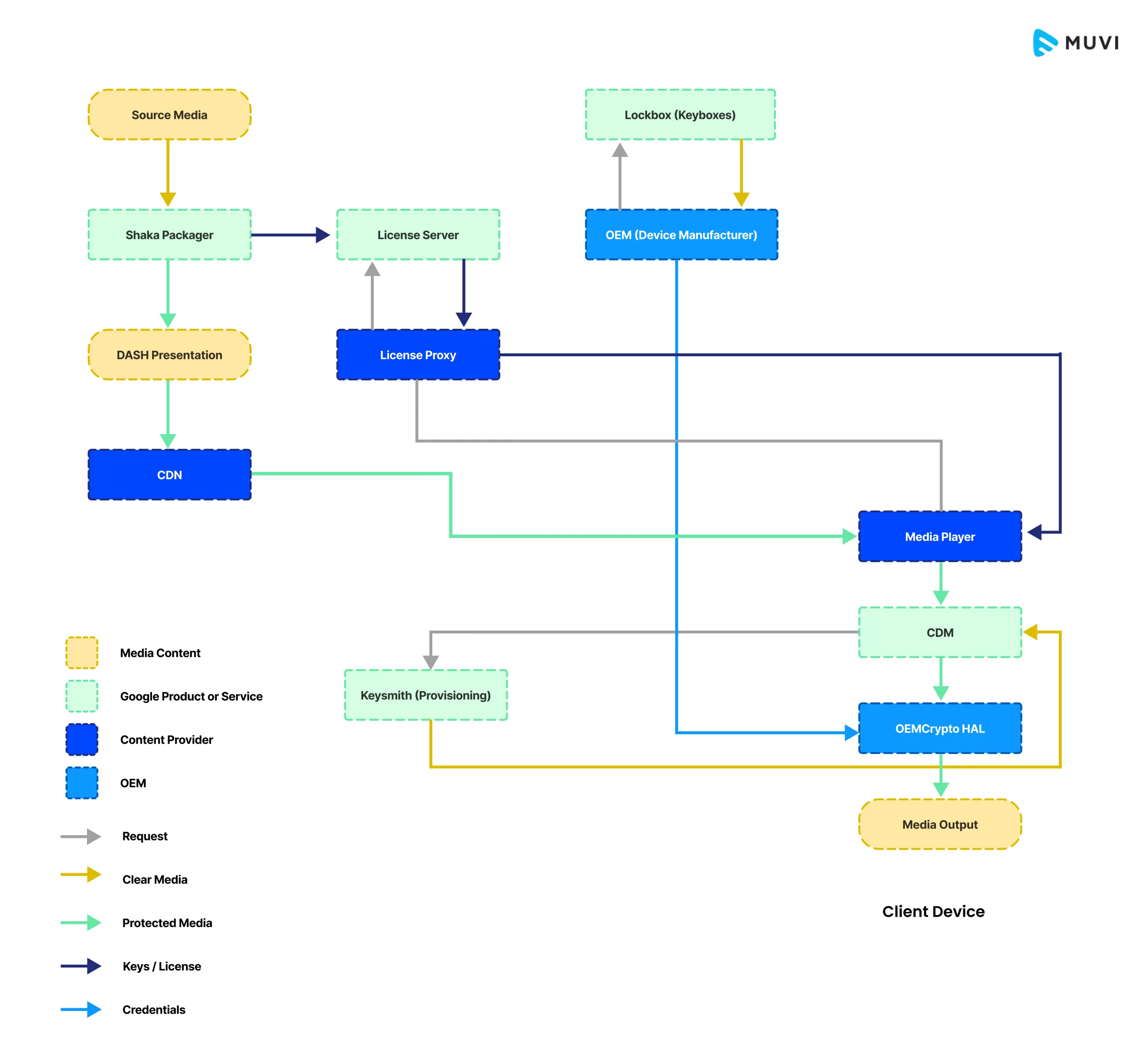
Source: Google Widevine Developer Portal
Google Widevine Supported Platforms and Devices:
Android (Mobile, TV, Automotive) | Chromecast | Google Home and Nest devices | ChromeOS |
Chrome Browser | Chromium Browser | Chromium Embedded Framework | Firefox Browser |
Edge Browser | Opera | Roku devices | Amazon Echo, Fire, Fire TV Devices |
Sony Playstation | Samsung Tizen Smart TV | LG WebOS Smart TV | Blu-ray Players |
Google Widevine Benefits:
- Security: Widevine offers robust protection against content piracy. It encrypts the media and controls decryption key distribution meticulously.
- Standardized: Widevine’s adoption of open standards ensures compatibility across a vast range of devices and platforms.
- Scalability: The system can handle a large number of users and content providers efficiently.
Read More: All You Need To Know About Google Widevine DRM

Microsoft PlayReady
PlayReady is another major contender in the DRM (Digital Rights Management) arena. Microsoft developed and released its first version in 2008. And it has seen many advancements since then! Here’s a breakdown of its technical aspects:
Functions of Microsoft PlayReady:
- Encryption: PlayReady utilizes content encryption to scramble the media data (audio and video). It uses the Advanced Encryption Standard (AES) in counter mode for this process. This encrypted content cannot be decrypted without the corresponding decryption key.
- Key Management System: A key management system governs access to the decryption key. A licensing server distributes decryption keys only to authorized devices and applications. This ensures that only approved users can decrypt and play the content.
- Standardized Approach: PlayReady adheres to industry standards for encryption and media packaging. It follows common encryption standards and MPEG-DASH protocol. This helps in broader compatibility across various devices and platforms.
Microsoft PlayReady Components:
- PlayReady Client: This software module is integrated into devices (PCs, tablets, TVs) and browsers (Edge, Internet Explorer). It enables them to decrypt PlayReady-protected content.
- PlayReady Server: This server functions as the key management hub. It delivers decryption licenses to authorized clients based on predefined security rules. These licenses contain the necessary keys to decrypt the content.
- PlayReady SDK (Optional): Content providers can use PlayReady SDK to prepare their media for protection. This SDK assists with encryption and generation of the associated licensing information.
Microsoft PlayReady Technical Architecture:
The given diagram explains how Microsoft Playready works.
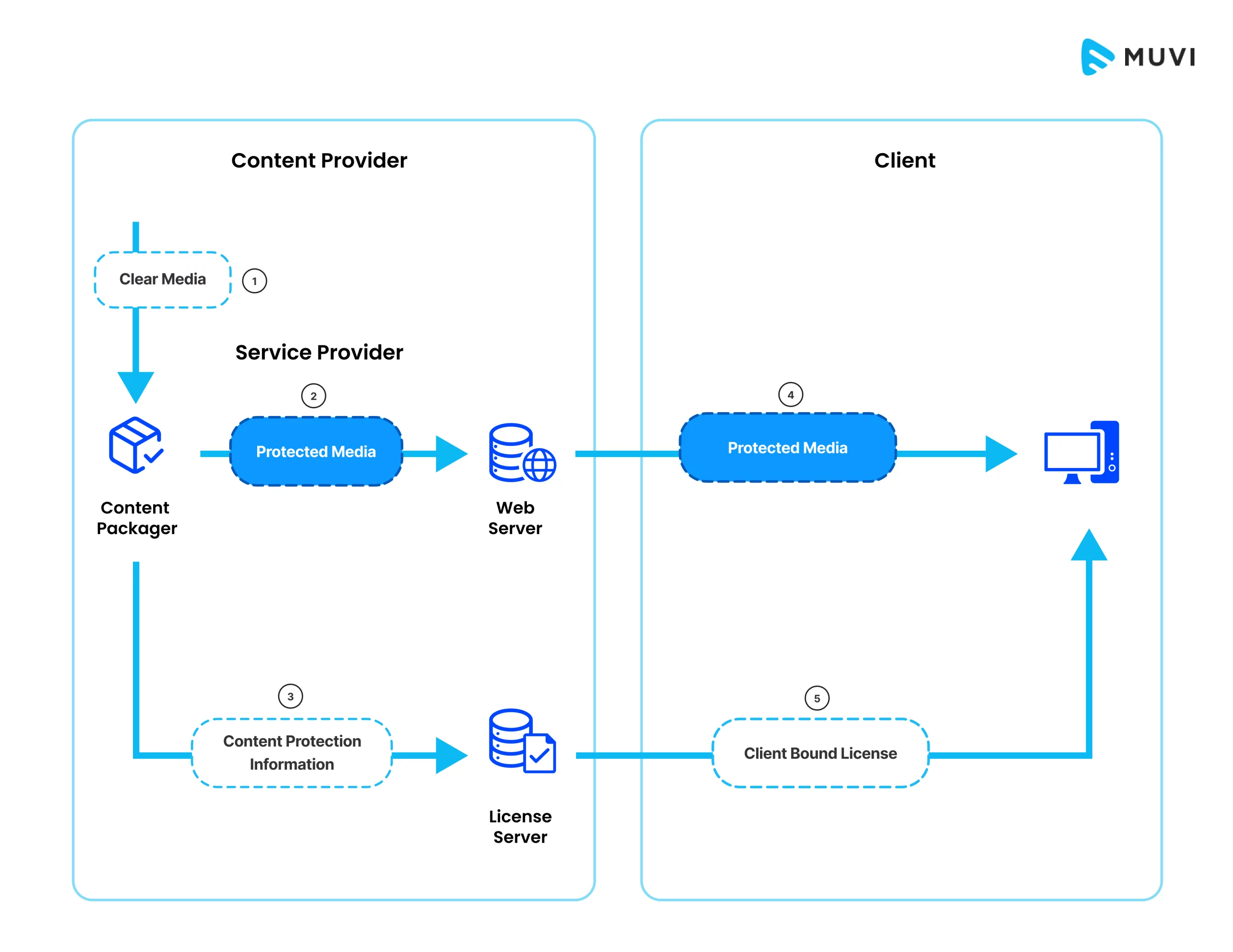
Source: Microsoft Official Websites
PlayReady Security Levels:
The table below shows the different PlayReady security levels, their purpose, and client implementation:
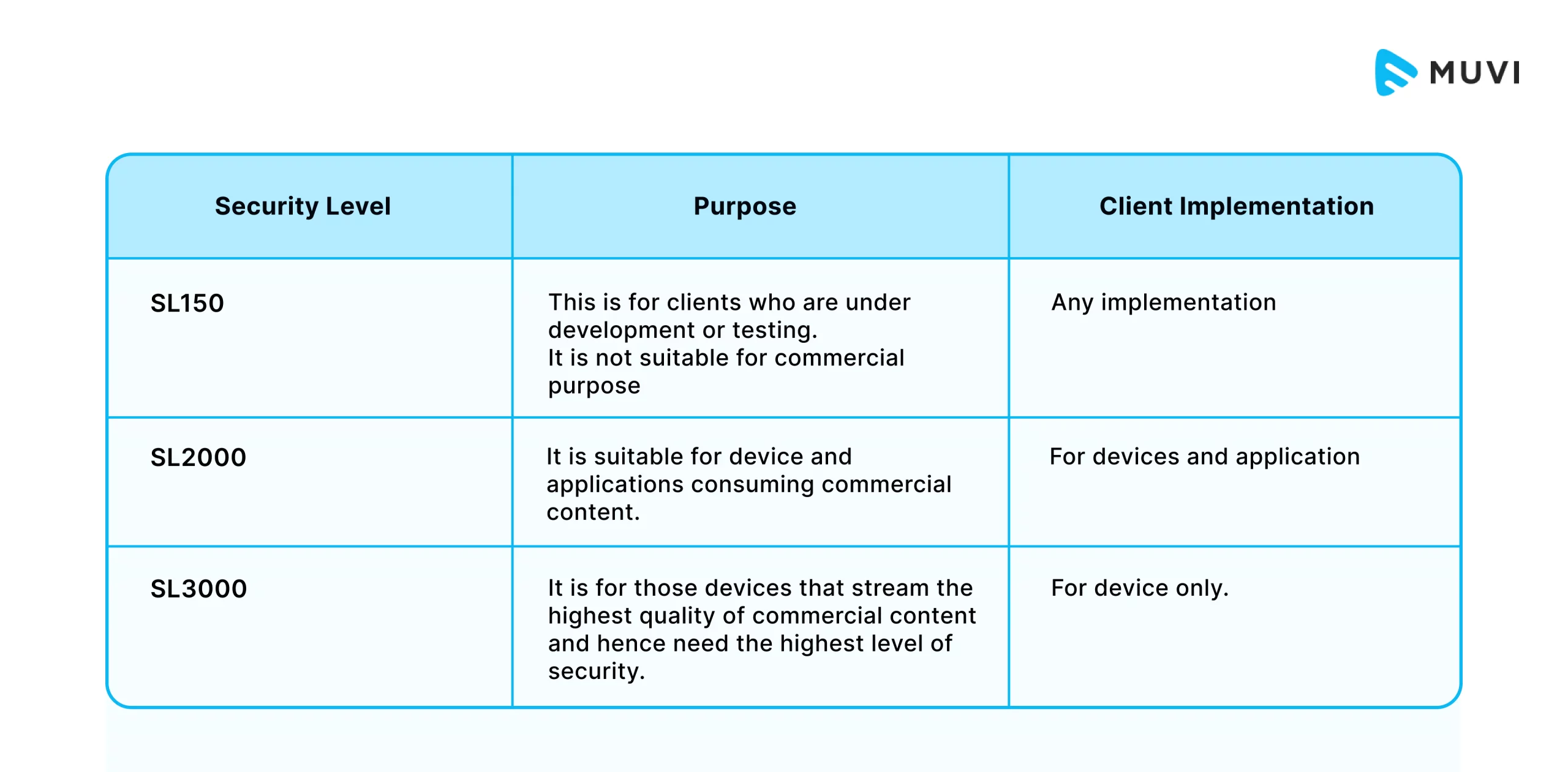
PlayReady Benefits:
- Robust Security: PlayReady offers a strong security posture through encryption, secure key management, and multiple content protection levels.
- Broad Compatibility: PlayReady is compatible across a wide range of devices and platforms.
- Scalability: The system can efficiently manage a large number of users and content providers.

Apple FairPlay
Apple FairPlay Streaming (FPS) is another major DRM solution. It helps secure streaming media delivery. Apple first launched it way back in 2003! Back then, it was used for the iTunes Music Store.
But over the years, it was improved to project a wide range of content. The current version can protect music, videos, and even ebooks. So, let’s dive into its technical aspects:
FairPlay Functionality:
- HTTP Live Streaming (HLS) Integration: FairPlay leverages HLS. And HLS is a popular protocol for delivering segmented video streams. It encrypts these segments using the Advanced Encryption Standard (AES) in CBC mode.
- Key Delivery and Management: FairPlay uses a server-side key delivery system. The content provider controls a key server. That server distributes decryption keys only to authorized devices running the FairPlay client.
- Device-based Decryption: The decryption process occurs within the trusted environment of the Apple device (iPhone, iPad, Apple TV) or Safari browser on macOS. This ensures the decryption keys remain secure.
Technical Details:
- Supported Codecs: FairPlay supports encryption for H.264 video codecs. Also, it supports various audio codecs like AAC-LC, HE-AAC, AC-3, and EC-3.
- Content Protection Levels: FairPlay offers different content protection levels. It allows content providers to specify playback restrictions. You can set restrictions like expiry times or device limitations.
- Secure Communication: FairPlay utilizes secure communication protocols like HTTPS and TLS. They ensure the safe exchange of keys and encrypted content between servers and devices.
Apple FairPlay Technical Workflow:
The diagram below explains the workflow and communication sequence of Apple FairPlay.
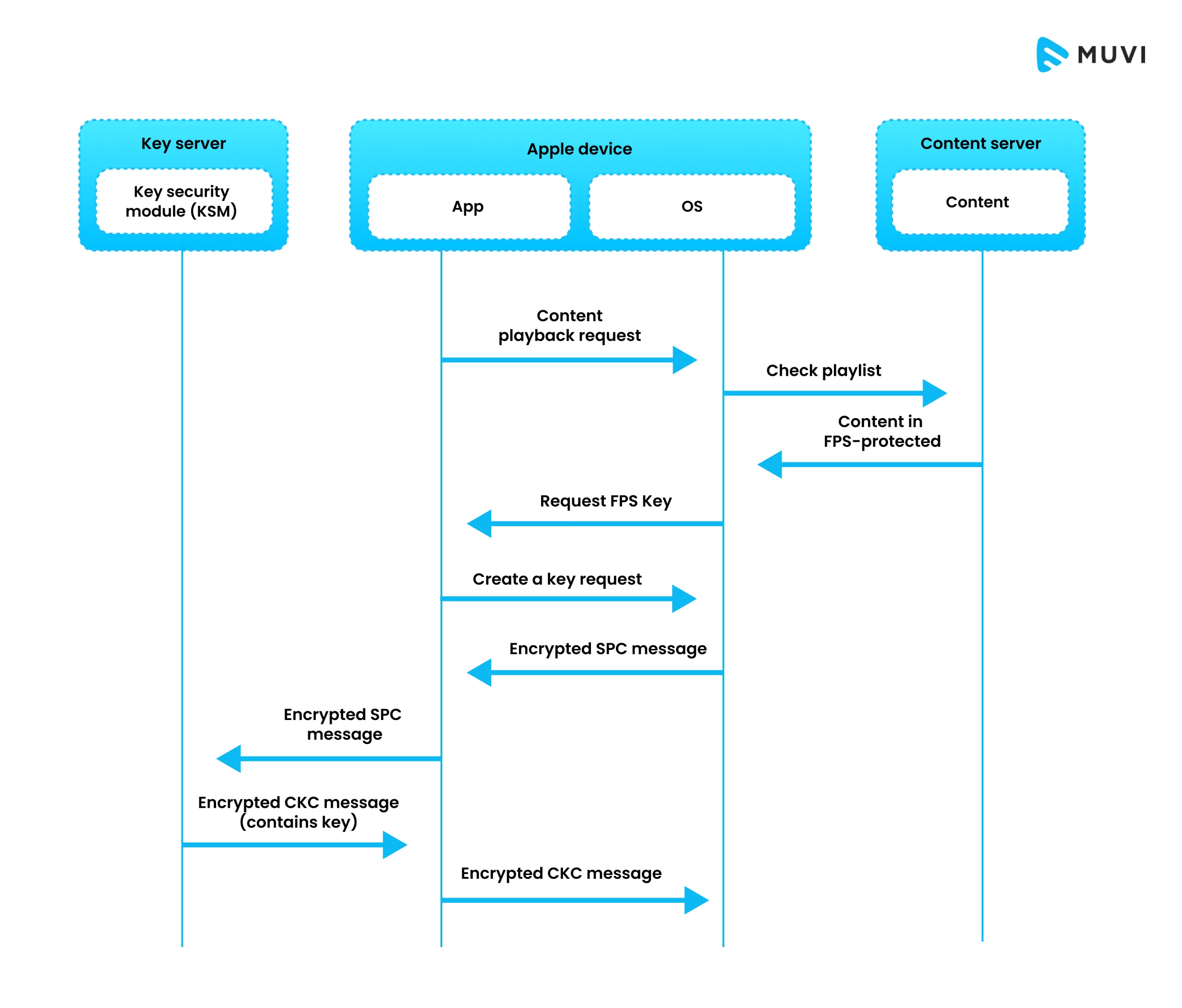
Source: FairPlay Streaming Overview
Apple FairPlay Benefits:
- Platform Security: FairPlay leverages the trusted execution environment of Apple devices. It ensures a high level of security for the decryption keys and encrypted content.
- Content Protection Flexibility: FairPlay offers various content protection levels. Also, it offers granular control over playback restrictions.
- Integration with Apple Ecosystem: FairPlay is seamlessly integrated with Apple devices and Safari. Hence it offers a smooth user experience for playback.
Read More: How Apple Fairplay Protects Your Content?
Comparing the Key DRM Solutions
Let’s compare the three DRM solutions below.
Feature | Widevine | FairPlay | PlayReady |
Encryption Standard | AES-CBC | AES-CBC | AES-CTR |
Key Delivery | Licensing server | Key server | Licensing server |
Device-based Decryption | ✅ | ✅ | ✅ |
Supported Platforms | Mainly the devices running on Android and Chrome OS, Chrome browser, along with many other devices. | Apple devices and Safari browser. | Windows devices, Edge browser, and some third-party platforms. |
Content Protection Levels | Multiple levels. E.g., rental vs. purchase restrictions, playback device limitations, maximum playback resolutions, etc. | It also offers multiple levels. E.g., content expiry time, content key rotation options, device authorization persistence, etc. | Similar to FairPlay with additional security options like secure key delivery protocols. |
Integration with Ecosystem | Integrates with various DRM systems. | Seamless integration with Apple ecosystem. | Integrates with Microsoft ecosystem. |
As you can see, all three DRMs offer robust security features to protect content during streaming. They all use encryption to scramble the media data. Also, they employ key management systems to control access to the decryption keys. Additionally, they all support secure communication protocols. These protocols ensure the safe exchange of keys and encrypted content.
However, their main key differences lie in the following points:
- Platform Support: Widevine offers the broadest platform support. While FairPlay caters to Apple devices and Safari. On the other hand, PlayReady primarily works on Windows devices and the Edge browser. However, it does work on some third-party platforms.
- Content Protection Levels: Widevine, FairPlay, and PlayReady all offer various content protection levels.
- Integration with Ecosystem: Widevine is designed to integrate with various DRM systems. While FairPlay seamlessly integrates with the Apple ecosystem. On the other hand, PlayReady integrates well with the Microsoft ecosystem.
Why Multi-DRM Is A Better Approach?
If you want to cater to all forms of devices, multi-DRM is important. As we have seen above, different DRMs cater to different sets of devices. And they integrate with different ecosystems.
If you use multi-DRM, you can leverage the benefits of all these systems together. Hence, you can keep your content protected on all devices.
Hence, multi-DRM offers several benefits, like:
- Wider Audience Reach: Supporting multi-DRM means your content is accessible on a wider range of devices and platforms. Hence, it helps you cater to a larger audience base. Also, it covers users who might have different devices or operating systems. With a single DRM, you might miss out on a significant portion of your audience base.
- Enhanced Security: Multi-DRM adds an additional layer of security. If one DRM system faces vulnerability, the others can still provide protection. This makes it more difficult for hackers to crack the system and access content.
- Streamlined Workflow: Multi-DRM vendors offer centralized management for all major DRM licenses. This simplifies the process of distributing content across different platforms.
In multi-DRM, you use multiple DRM solutions like Widevine, FairPlay, and PlayReady together. Whenever your user tries to play the content, the multi-DRM server receives the request. It checks the device type and other pre-defined criteria and releases a suitable license key.
If you use Muvi to create your streaming platform and manage your video content, you can leverage a built-in multi-DRM setup. Let’s now walk you through Muvi’s state-of-the-art multi-DRM setup.
Muvi’s Multi-DRM Architecture – A Combination of the Best!
At Muvi, content security is always our top priority. That is why, Muvi offers built-in multi-DRM across the product line.
Muvi’s Multi-DRM Architecture:
- Combines DRM solutions: It Integrates multiple DRM standards like Widevine, FairPlay, and PlayReady.
- Centralized licensing server: Manages and distributes decryption licenses for each DRM system. This server authenticates devices and grants access based on pre-defined security rules set by you!
- Multi-platform approach: Enables content delivery and playback security across various devices and platforms.
Benefits of Muvi’s Multi-DRM
- Broader content protection: Muvi’s multi-DRM system offers a wider security net. It leverages multiple DRM systems, covering all devices. Hence, It can mitigate any form of risk.
- Seamless content delivery: It simplifies content delivery by handling DRM integration and license management for various platforms.
- Enhanced security for offline content: Protects downloaded content with DRM encryption. Hence, it further reduces the risk of unauthorized access.
Read more on Muvi’s Multi-DRM Architecture.
Wrapping Up
As the threat of piracy keeps increasing, content protection has become extremely crucial for streaming businesses. And using a single DRM solution is not enough anymore. DRM solutions like Widevine, PlayReady, and FairPlay are quite effective. But they cater to different devices and ecosystems. That is why using a multi-DRM system is necessary.
At Muvi, we offer built-in multi-DRM that helps you protect your content across devices. Apart from multi-DRM, we also offer features like dynamic watermarking, forensic watermarking, server-side protection, firewalls, geo-blocking, and VPN detection, for all-round protection. Muvi’s robust security features help protect your content from piracy. Click here to try Muvi Products for FREE for 14 days. No cards required.

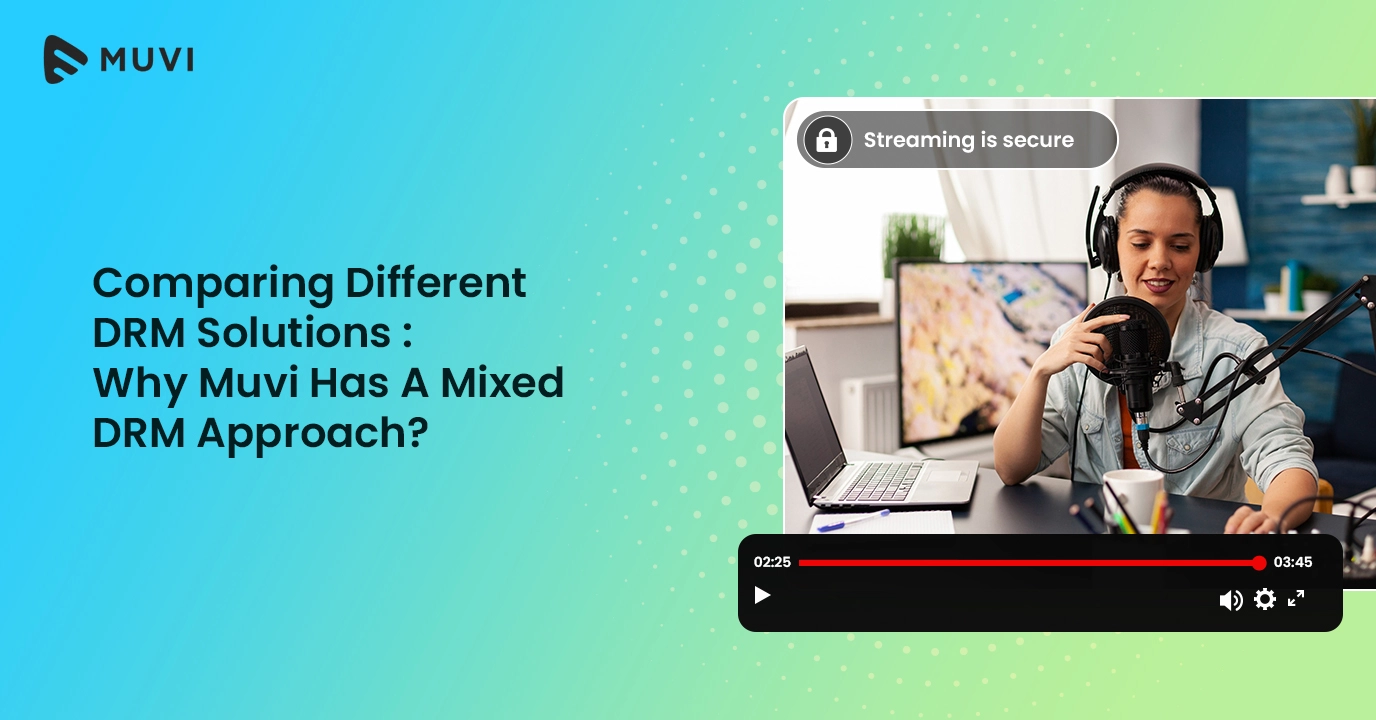










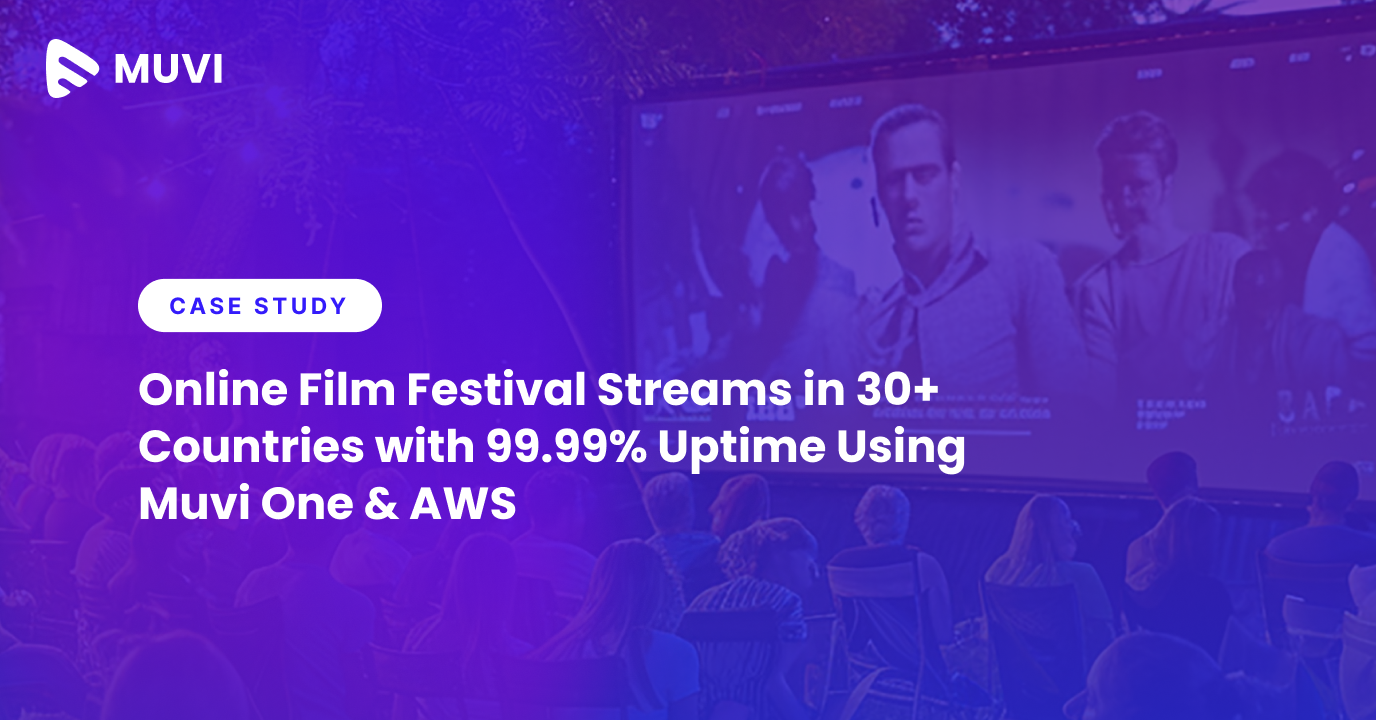




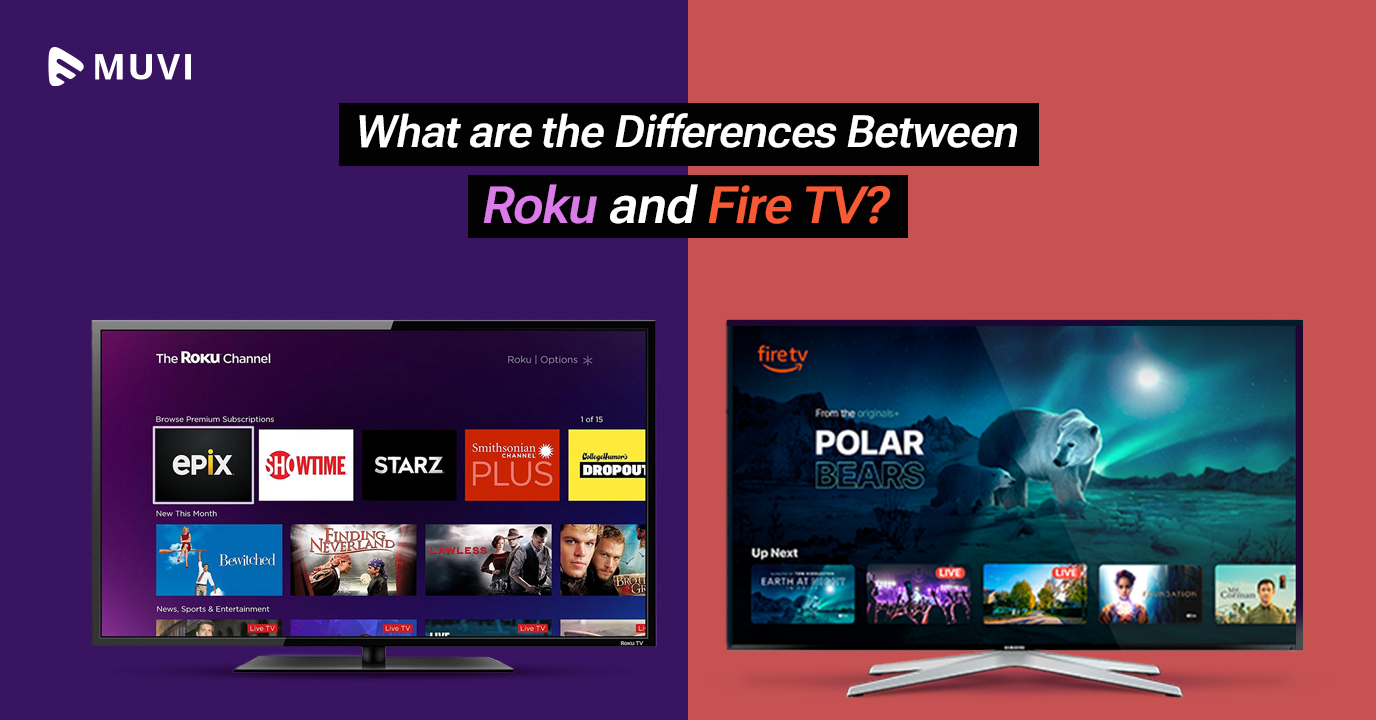
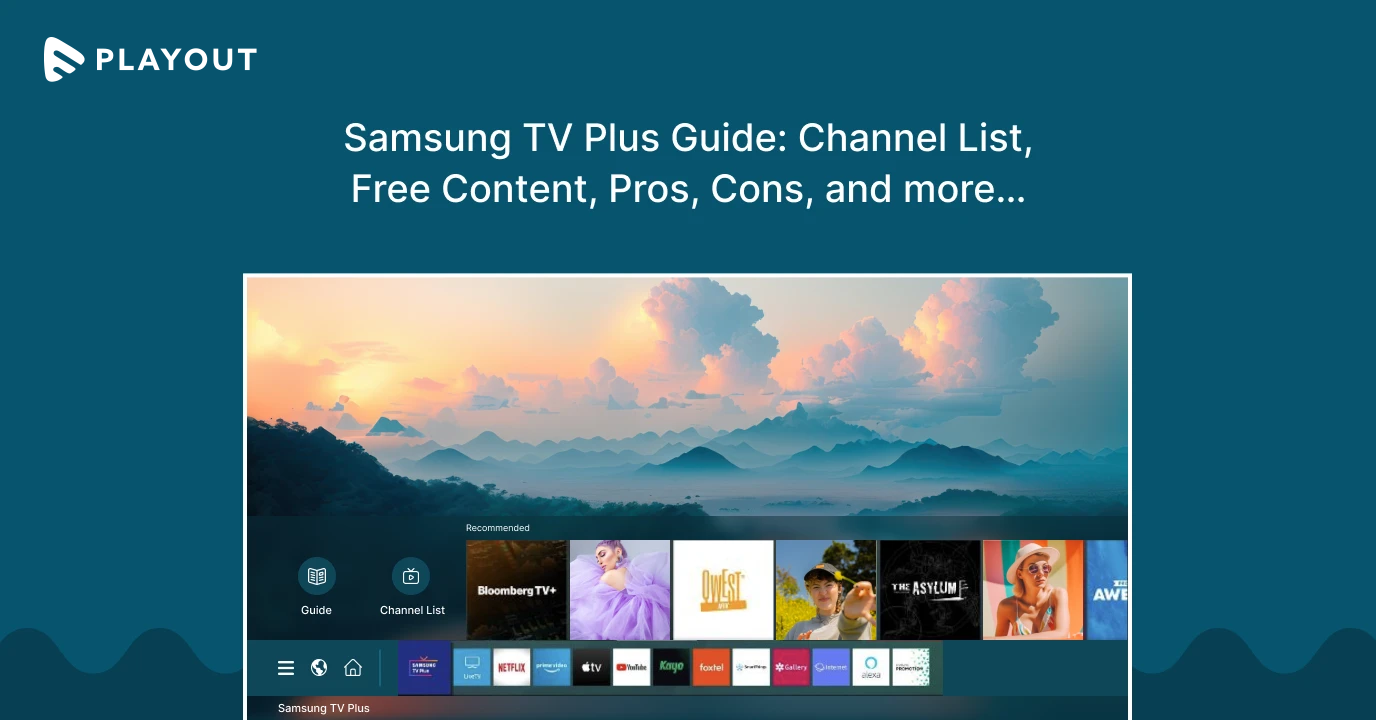
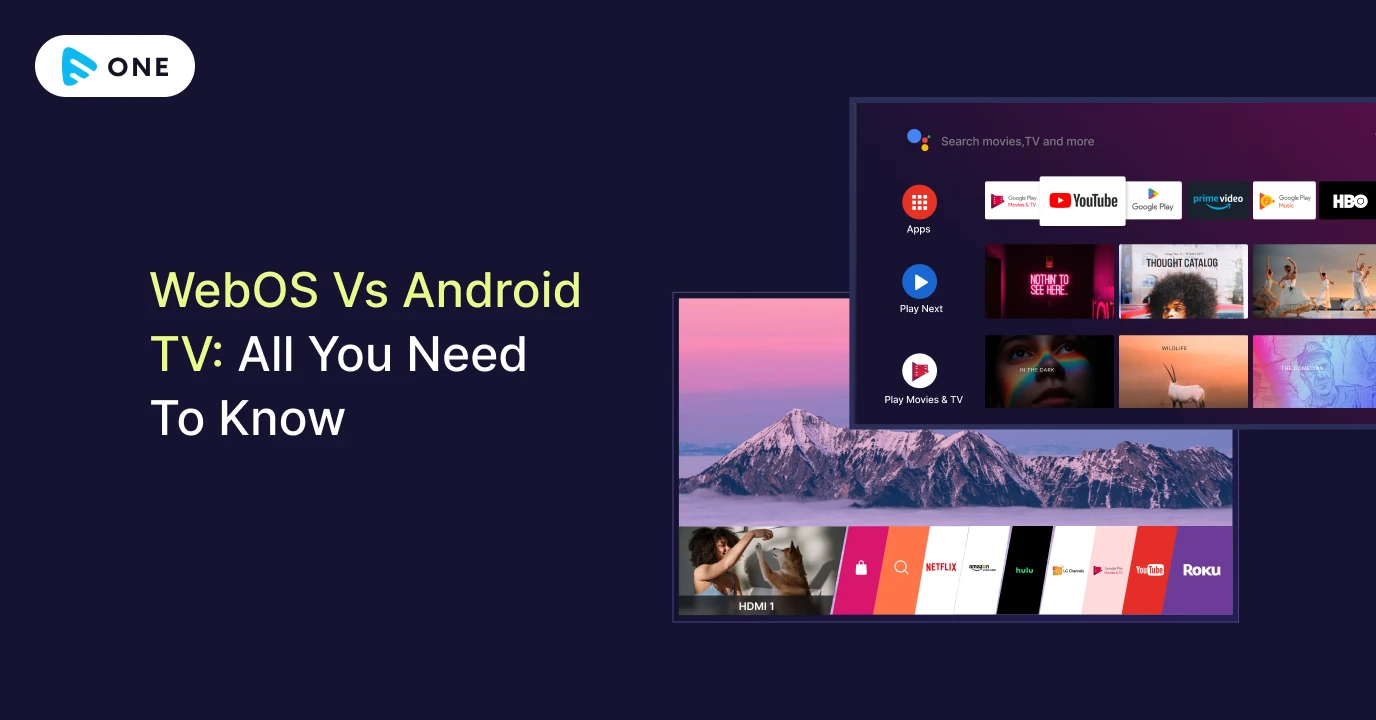



Add your comment